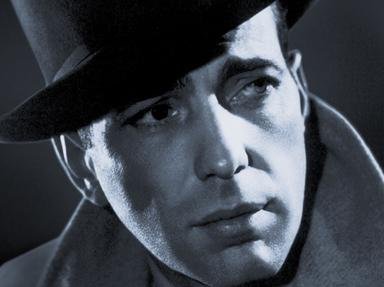
Humphrey Bogart: An Actor for the Ages Quiz
Can you place these ten Bogie films in the order in which they were released?
An ordering quiz
by looney_tunes.
Estimated time: 3 mins.

| What's the Correct Order? | Choices |
| 1. (1930) | The African Queen |
| 2. (1936) | The Harder They Fall |
| 3. (1941) | The Petrified Forest |
| 4. (1942) | Up the River |
| 5. (1944) | To Have and Have Not |
| 6. (1946) | The Maltese Falcon |
| 7. (1948) | Key Largo |
| 8. (1951) | Casablanca |
| 9. (1954) | The Big Sleep |
| 10. (1956) | The Caine Mutiny |